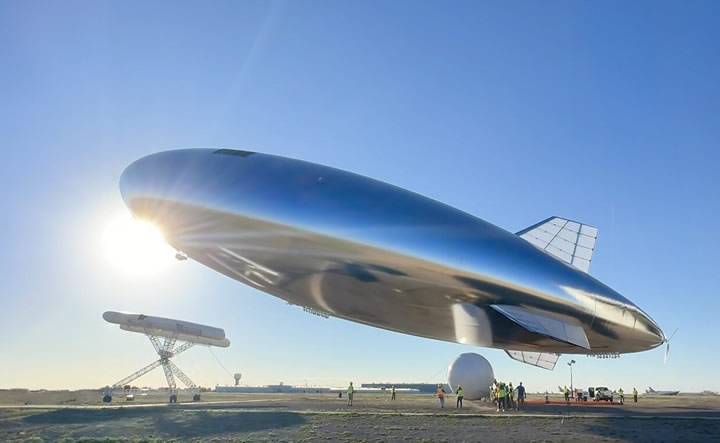
Sceye, an aerospace company with a background in materials science and a manufacturer of High-Altitude Platform Systems (HAPS), announced today that it has completed a full day flight in the stratosphere over a theater of operations. This is a critical milestone on the way to long-duration flights of months or years, using solar power during daylight hours and recharging battery capacity to enable overnight flight the next morning. The HAPS launched from the company’s New Mexico facility at 7:36 a.m. MST on August 15 and landed the following day at 12:21 p.m. MST after flight test points were completed.
“This is a significant milestone for the Sceye team, opening up tremendous opportunities for us in the stratosphere and building a whole new infrastructure layer between drones and satellites,” said Mikkel Vestergaard Frandsen, CEO and founder of Sceye. The ability to stay in the stratosphere above an operational area for long periods of time provides a unique vantage point for real-time detection of climate disasters such as wildfires and methane leaks, as well as connecting billions of people who are unconnected and who cannot be served by conventional infrastructure.
Today’s launch has advanced all key stratospheric objectives of the Sceye 2024 test program, including the demonstration of daytime flight, controlled relocation, and the ability to remain over an operational area. Meeting these objectives will enable Sceye to initiate commercial use cases.
“The flight was an important demonstration of the capabilities and resilience of our platform. I look forward to watching its capabilities grow and increase with each subsequent flight,” said Stephanie Luongo, Head of Mission Operations at Sceye.
Sceye has completed twenty test flights and two more test flights are planned for 2024 to further develop the platform in preparation for commercialization.
On board the flight was a state-of-the-art payload of instruments designed to solve some of humanity’s most critical problems: stereo-optical cameras to create precise elevation models used to understand and mitigate disasters such as floods and earthquakes; infrared cameras to predict and detect wildfires and to detect methane leaks in real time, two significant causes of global warming. The payload also included a Synthetic Aperture Radar, which allows the platform to see through clouds and observe the planet’s most important systems in any weather and at any time of day.
About Sceye
Sceye is an aerospace company founded in 2014 that aims to unlock the possibilities of the stratosphere by lifting and connecting everyone to high altitudes and protecting our planet. The company is leading the high altitude platform systems (HAPS) industry to ensure universal and equitable connectivity, improve climate change monitoring, natural resource protection and wildfire detection, and better detect and contain disasters before they spiral out of control.

